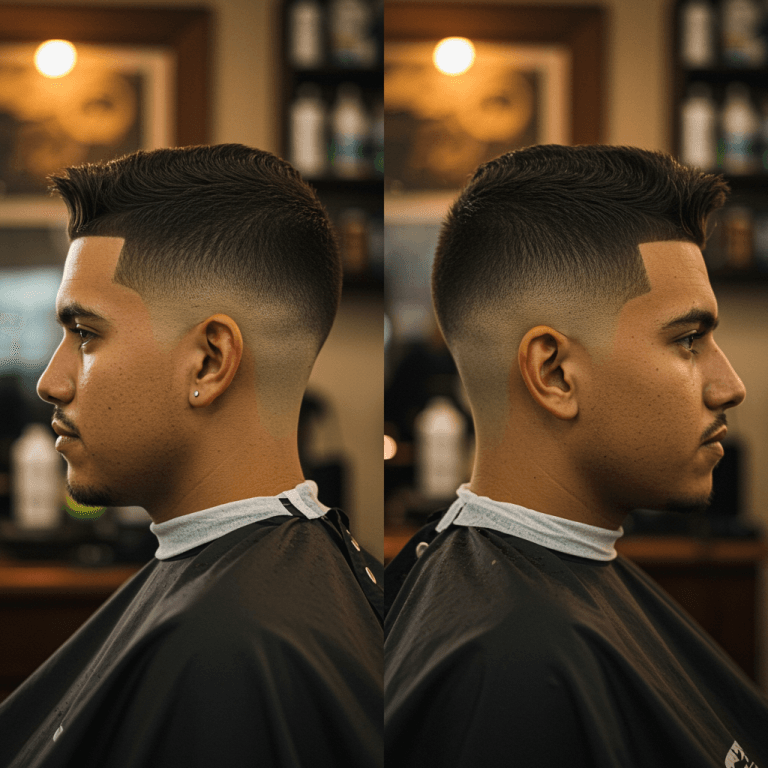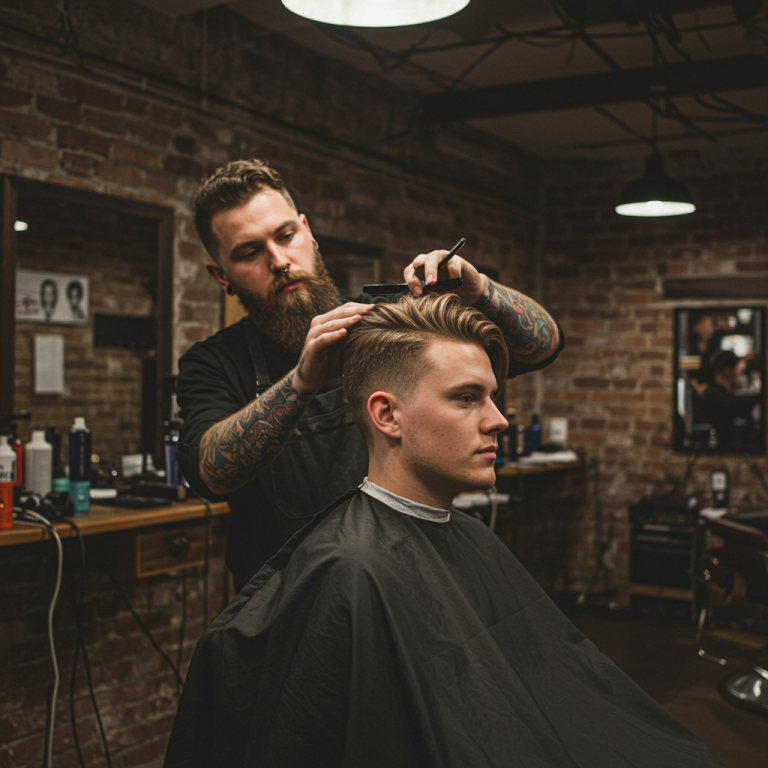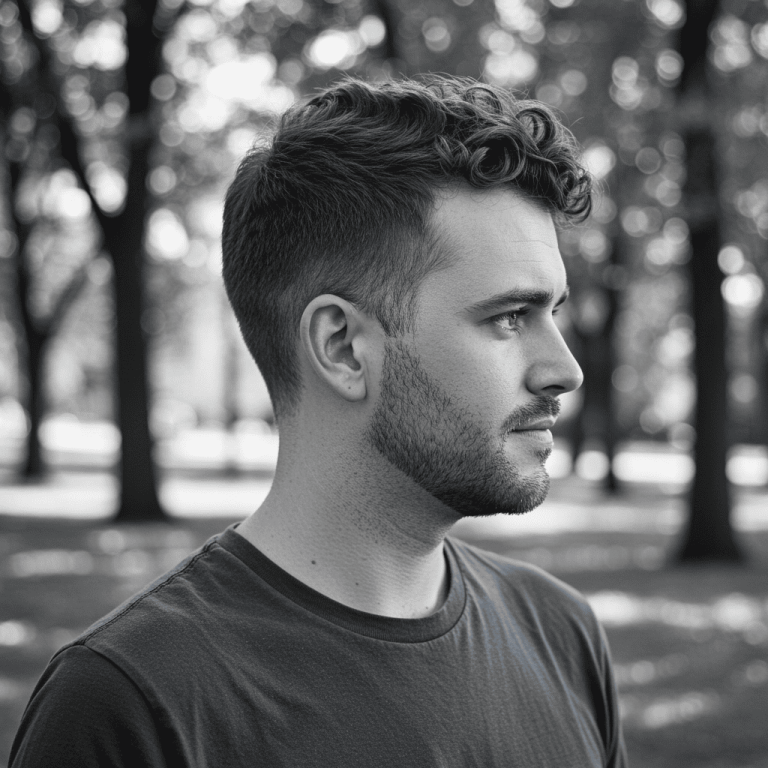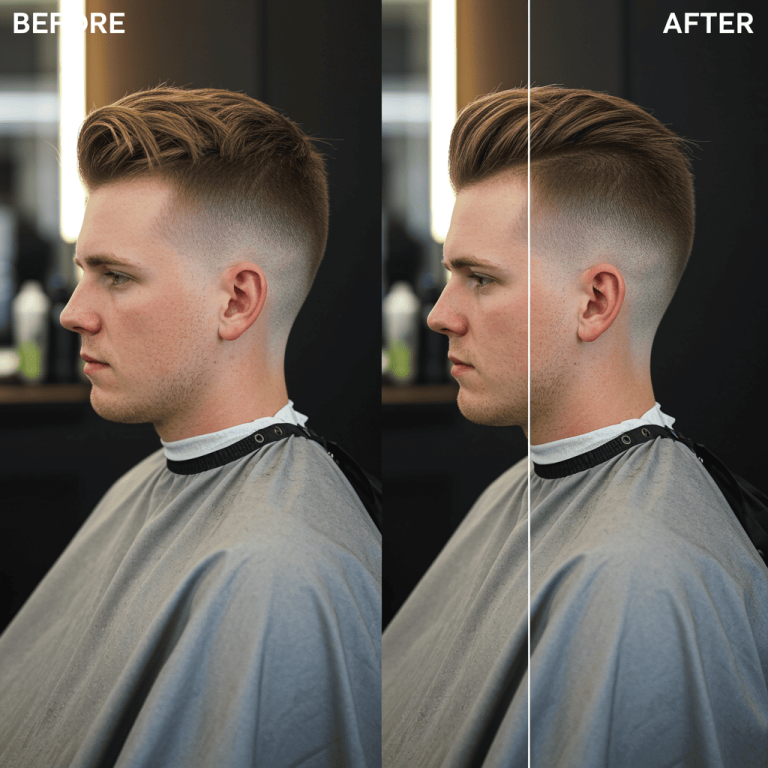When it comes to men’s hairstyles, fades are a timeless trend that continues to dominate the grooming scene. Among the many variations, the Mid Fade Vs Low Fade stand out as two of the most popular choices. Both styles offer a clean, sharp look, but they differ in where the fade begins and how dramatic the transition appears. Whether you’re looking for a bold statement or a subtle, polished finish, understanding the differences between a mid fade and a low fade can help you choose the perfect cut for your style. Let’s dive into the details!
Introduction About Mid Fade vs Low Fade
Both mid fade vs low fade are a type of men’s haircut where the hair gradually tapers down to the skin, creating a seamless blend. The key difference between a mid fade and a low fade lies in the starting point of the fade. A mid fade begins higher up on the sides, typically around the temples, while a low fade starts closer to the ears, near the natural hairline. This subtle distinction can completely change the overall look and vibe of your hairstyle. Whether you prefer a more dramatic or understated appearance, understanding these two styles will help you make an informed decision.
What is a Mid Fade?


A mid fade is a haircut where the tapering starts around the middle of the sides and back of the head, usually at the temples. This creates a noticeable contrast between the longer hair on top and the shorter sides, making it a bold and eye-catching style. The mid fade is versatile and works well with a variety of hairstyles, including pompadours, quiffs, and textured crops. It’s a great choice for those who want a modern, edgy look that still maintains a sense of balance.
What is a Low Fade?


A low fade, on the other hand, begins much lower on the head, near the ears and the natural hairline. This creates a more gradual and subtle transition, giving the haircut a clean and polished appearance. The low fade is ideal for those who prefer a more understated and classic look. It pairs well with styles like slick backs, side parts, and even buzz cuts. Because the fade starts lower, it’s less dramatic than a mid fade, making it a great option for professional settings or those who want a low-maintenance style.
Difference Between Mid Fade vs Low Fade
While both fades are stylish and versatile, they cater to different preferences and face shapes. Here’s a breakdown of the key differences, Below are two example are about mid fade vs low fade ,


- Starting Point:
- Mid Fade: Begins around the temples, creating a higher contrast.
- Low Fade: Starts near the ears, offering a more subtle transition.
- Drama and Boldness:
- Mid Fade: More dramatic and eye-catching, perfect for making a statement.
- Low Fade: Subtle and classic, ideal for a clean and professional look.
- Versatility:
- Mid Fade: Works well with edgy, modern hairstyles.
- Low Fade: Complements traditional and timeless styles.
- Maintenance:
- Mid Fade: Requires more frequent touch-ups to maintain the sharp contrast.
- Low Fade: Easier to maintain due to its gradual transition.
How to Choose Between a Mid Fade and Low Fade
Choosing between a mid fade and a low fade ultimately depends on your personal style, face shape, and lifestyle. If you want a bold, modern look that stands out, a mid fade might be the way to go. On the other hand, if you prefer a classic, low-maintenance style that works in both casual and professional settings, a low fade could be the better choice.
Before making a decision, consult with a trusted hairstylist or a hair doctor (trichologist) who can assess your hair type, face shape, and scalp health. They can also recommend hair products tailored to your specific needs, such as styling gels, pomades, or moisturizers, to keep your fade looking fresh and healthy.
Final Thoughts About Mid Fade Vs Low Fade
Both the mid fade vs low fade are excellent options for men looking to upgrade their hairstyle. While the mid fade offers a bold and edgy vibe, the low fade provides a timeless and polished look. The choice comes down to your personal preference and the statement you want to make. Remember, consulting a professional hairstylist or hair doctor is always a good idea to ensure your haircut and hair care routine are perfectly suited to you. So, which fade will you choose?
What is the difference between a mid fade and a low fade?
The main difference lies in where the fade starts:
Mid Fade: The taper begins around the temples, creating a bold, high-contrast look.
Low Fade: The taper starts near the ears, offering a subtle, gradual transition.
Mid fades are more dramatic, while low fades are classic and understated.
What is a mid fade?
A mid fade is a haircut where the hair tapers down from the mid-point of the sides and back, typically starting around the temples. It creates a sharp contrast between the longer hair on top and the shorter sides, making it a bold and modern style.
What is a low fade?
A low fade is a haircut where the taper begins near the ears and follows the natural hairline. This creates a smooth, gradual transition, giving a clean and polished appearance. It’s a timeless and versatile style suitable for both casual and professional settings.
What is the cost of a mid fade?
The cost of a mid fade varies depending on the location, salon, and stylist’s expertise. On average, you can expect to pay:
20 to 50$ at a standard barbershop.
50 to 100$ at a high-end salon or with a premium stylist.







